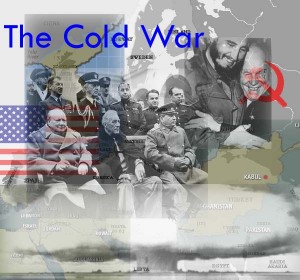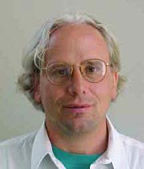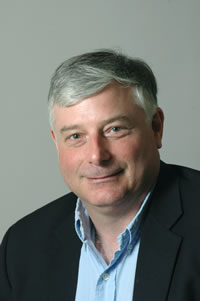 March 28, 2011: Due to the tragedy unfolding, this very moment, in Japan, the world has a renewed interest in Iodine, specifically in the form of potassium iodide. Not since George Orwell’s, “Cold War” was popularized in 1947, have we seen this level of interest, in this often misunderstood mineral compound. The sad part is that people are discovering it for the first time, rediscovering it and/or hording it, for completely the wrong reasons. (Beneficial reasons – Visit Iodine4Health.Com )
March 28, 2011: Due to the tragedy unfolding, this very moment, in Japan, the world has a renewed interest in Iodine, specifically in the form of potassium iodide. Not since George Orwell’s, “Cold War” was popularized in 1947, have we seen this level of interest, in this often misunderstood mineral compound. The sad part is that people are discovering it for the first time, rediscovering it and/or hording it, for completely the wrong reasons. (Beneficial reasons – Visit Iodine4Health.Com )
Yes, if there happened to be a nuclear event in our own back-yard, like at the San Onofre Nuclear Generating Station, we would all benefit from a ration of potassium iodide (Iodoral). The truth of the matter is, the meltdown that is taking place at the Fukushima Daiichi power plant in Japan – WILL NOT affect us. We WILL NOT be exposed to dangerously high radiation levels. Any negative impact to our health, because of this event, will be primarily psychological in nature – in the form of: fear, anxiety, worry, depression, uncertainty, apathy…. This psychological torture is being promoted and fostered by the media, in part, because the press is not reporting what the public truly needs and wants to know, “is there any real risk of unhealthful radiation exposure from the nuclear meltdown in Japan?”
I posed this question to two reputable professors, one at USC and the other at UC Berkeley, who would know the answer and tell it exactly as it is.
Dr. Marcus Ettinger (to the professors): I am writing a post, to be published on my blog, in order to better educate my patients and those who follow my blog.
Question: let’s say the worst case scenario occurs, a further or complete melt-down of reactor 2 (or other reactors). What, in your estimation, would be the absolute risk of radiation exposure we could face in California?
Is there a possibility, even if remote, that we could be exposed to levels amounting to or exceeding 100mSv? (Radiation Dose Chart – not sent in original question) Or, is the distance so great between us and Japan that the radiation would be diluted and pose no or negligible health risk?
I truly appreciate any insight you can share with me. This will most certainly help many people and lesson the fear they are experiencing because of an information vacuum. When there is a lack of information people will fill-in the void with reactive, rather than analytical thought.
Thank you in advance,
Sincerely,
Dr. Marcus Ettinger
From: Dan Stram, PhD
Hi Dr. Ettinger,
Judging by the one complete meltdown that has occurred, i.e. Chernobyl, I would have to say that it is inconceivable that anyone in the US would see exposures anywhere near the 100mSv that you ask about even if the scale of the disasters were the same. Japan is a 10 hour plane flight from California, any fallout that could be lifted high enough to reach the west coast would have to be so diluted and spread out as to be of no significance to US public health (e.g. contributing far less than normal background radiation to even the most exposed). Other pathways (e.g. seafood from Japan etc) are also extremely remote and not likely to provide concentrated levels. In Japan itself the most important pathway involves milk contamination with Iodine 131 and this can be closed off by not drinking locally produced milk.
So far the Fukushima releases are not anywhere near the significance of the Chernobyl event and it seems unlikely that even a worse-case in Japan could be anywhere near as large as Chernobyl which exploded and burned uncontrolled for days with no containment.
Workers in Japan are at risk – i.e. those actually performing the emergency work at Fukushima. Apparently some numbers of them are getting doses above 100mSv from what I have been reading.
Dan Stram, PhD
Associate Professor Preventive Medicine (Division of Biostatistics)
The Department of Preventive Medicine at the Keck School of Medicine of USC
- Dr. Stram’s research interests center on the development and application of modern statistical methods. He is especially interested in measurement error methods in cancer epidemiology, methods for the analysis of repeated measures data, and human genetics data. He has worked extensively on these issues in the A-bomb survivor cohort and other important data series. He is also involved in the conduct of clinical trials through the Children’s Cancer Group.
- Research Associate, Radiation Effects Research Foundation Hiroshima, Japan., 1986 – 1989
From: Edward C. Morse, PhD:
1. The radioactivity exposure potential at any of the reactors is now less than one percent of its original level.
2. In the case of Chernobyl, Berkeley was running at about ten times normal background for about a week. That resulted in an additional exposure of 70 day’s worth, or about 40 millirem. One transcontinental jet aircraft round trip from here to Washington, DC is about 5 millirem.
3. This accident, maximum, would be 100 times less release than Chernobyl, or about 0.5 millirem.
4. Note that 1 Sv=100 Rem, so this translates to 5 micro-Sievert (mS), well below your 100 mSv question.
Edward Morse, PhD
UC Berkeley Department of Nuclear Engineering
My Commentary: I love potassium iodide (Iodoral) and I’ve been taking 50 mg’s/day since mid-February (1 month before the 9.0 earthquake and subsequent tsunami that hit Japan on March 11, 2011). I even have my six year old daughter on a small dose 450 mcg/day). Maile has been doing better in first grade and I have not slept this well since I was a teenager.
Important facts about iodine: The highest concentration of iodine found in the body is in the thyroid gland and it’s essential for proper thyroid function. Outside the thyroid, the highest concentrations will be found in the breast and ovaries of women, a man’s prostate gland and the epidermis of the skin. Iodine is found in almost every cell of the body; that is if there is enough to saturate the thyroid first, which in the vast majority of us is not the case.
Iodine (I) belongs to a class of elements called “halogens”, along with fluorine (F), chlorine (Cl), and bromine (Br). Fluorine (Fluorine is a known carcinogen and is present in our drinking water and in many of our drugs such as Cipro, Lipitor, Prozac, Paxil, and Effexor) and bromine (bromide in baked goods – bread, interferes with iodide uptake and utilization in the thyroid gland) appear to be NOT REQUIRED for human health. Along with perchlorate, a water contaminant and chlorine compound, these various halogens compete or affect each other.
Fluorine, certain chlorine compounds and bromine, all push iodide out and affect the body in a negative manor, especially the thyroid, breast, ovaries, prostate and skin.
The U.S. has the highest incidence of breast cancer and Japan’s breast cancer level is the lowest in the world. The U.S. life expectancy rating is 48th of the 226 countries; Japan is 6th. Our infant mortality rate is 7 per 1000 births; Japan is 3.5 per 1000, which is the lowest incidence in the world. Yet, when the Japanese relocate to this country and adopt our diet, they quickly join the U.S. statistics for cancer, life expectancy, and infant mortality.
Two reasons why we are so deficient in iodine are: First, and obviously, we don’t ingest enough iodine every day. Second, the little iodine we ingest gets displaced or pushed out of the essential tissues (by fluorine, chlorine and bromine – Halogen Metals). See IODINE AND OTHER HALOGENS.
The good new is that iodide supplementation is effective in detoxing fluorine and bromine out of the body. (See also Iodine and Disease and Iodine and the Body). Call to find out how iodine deficiency may be affecting you or how fluoride or bromide toxicity may be affecting you 714-639-4360.
Iodine and Radiation Resources:
This an independent site run by Ken Rockwell Current California Radiation Levels Location: Measured outdoors near La Jolla (San Diego). © 2011 KenRockwell.com. All rights reserved.
EPA – Japanese Nuclear Emergency: Radiation Monitoring (Daily Data Summary)
The webs best resource for information on: How much iodine do we need? What are the best sources? What happens if we don’t get enough? Or get too much? www.Iodine4Health.com
The practice of Dr. Marcus Ettinger

